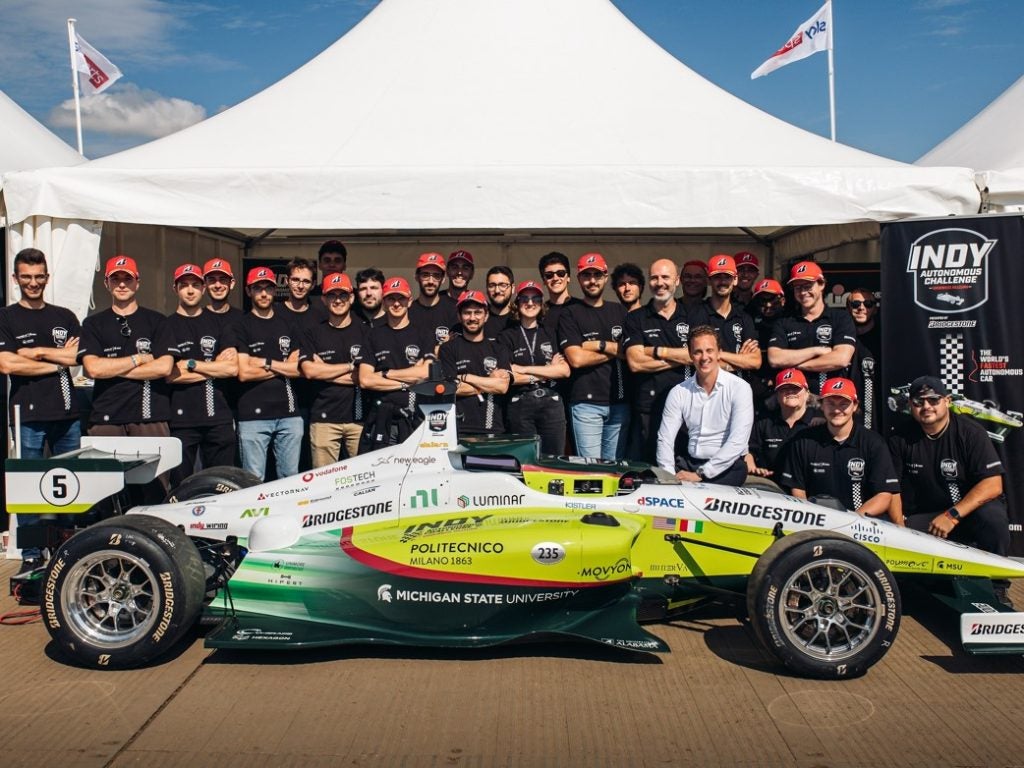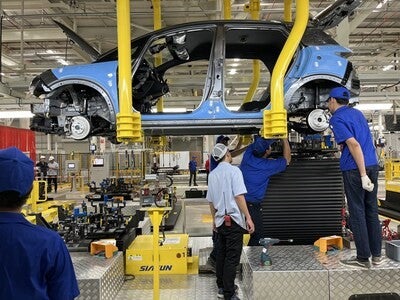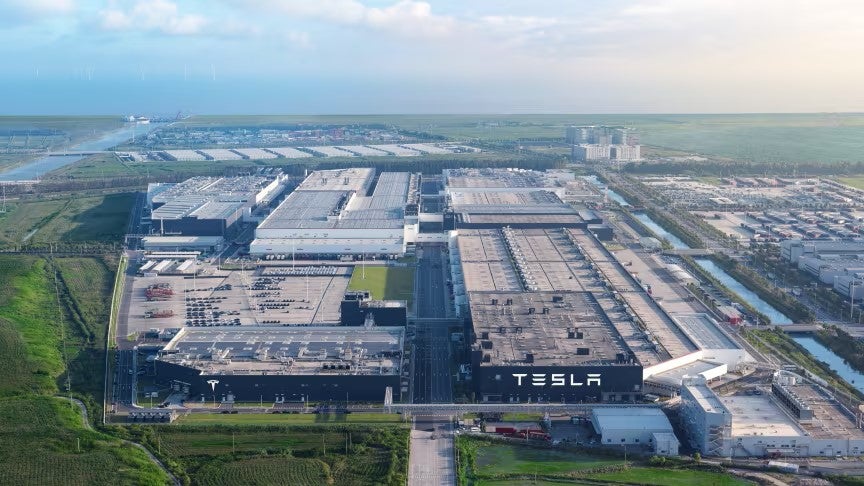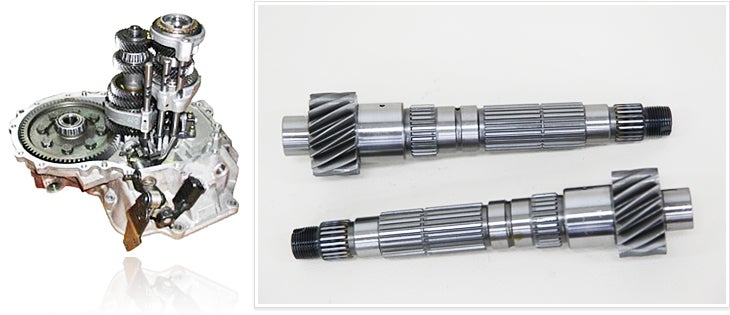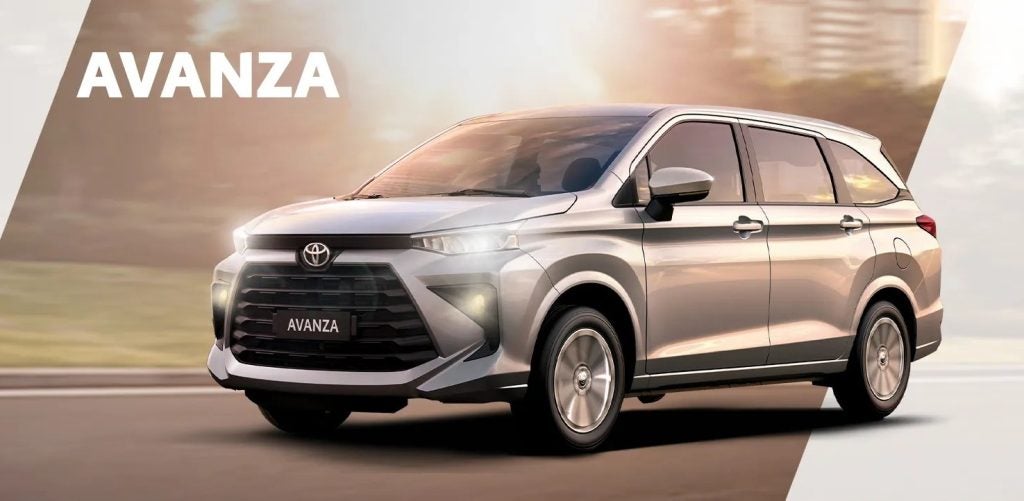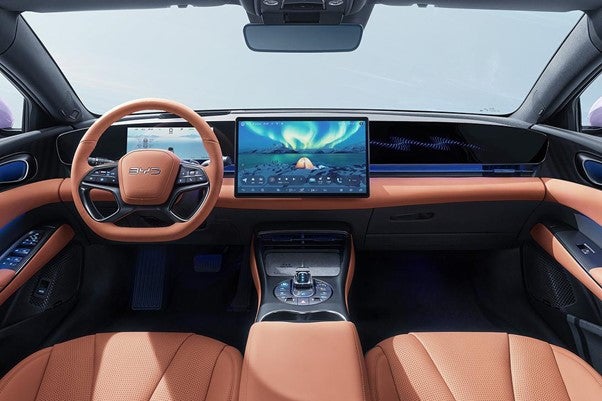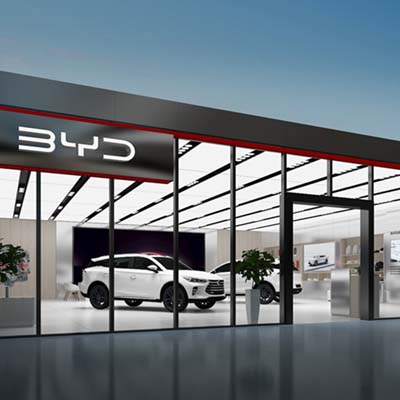Autonomous driving has been taken to the next level by the team at The Indy Autonomous Challenge (IAC) who have developed a self-driving AV-24 race car. The race car was quickly turning heads at this year’s Goodwood Festival of Speed, setting the record for the fastest autonomous Hillclimb at the festival, reaching a top speed of 111.2 mph (179 kph) and a finish time of 66.37 seconds.
The official vehicle itself is the IAC-built AV-24, that has been retrofitted with hardware and controls to enable automation. The IAC AV-24 chassis is a modified version of the Dallara Indy NXT chassis.
Frankie Youd spoke with Marc Ferlet, the director of marketing for the IAC and Rodrigo Senofieni, control engineer with the PoliMOVE-MSU Autonomous Racing team, to learn more about the car and its technology.
Frankie Youd (FY): Could you describe the basics of the technology in the vehicle?
Marc Ferlet (MF): The vehicle is equipped with cameras and LiDAR sensors. LiDAR uses laser beams to detect objects by reflecting light, similar to how bats use echolocation but with light instead of sonar. Inside, there’s a powerful AUTERA AutoBox computer from our partners at dSPACE.
This is where Rodrigo and his team PoliMOVE-MSU upload their AI Driver in charge of decision making. It takes input from the car’s multiple internal and external sensors to determine when to accelerate, break, and steer. Below that is a New Eagle Raptor Control Module in charge of ‘acting’ on behalf of the computer. You can think of it as the hands and feet of the driver. In short It translates the computer’s decisions into the physical actions of the car.
To compare this to the way a human driver operates, you could represent the sensors as the drivers eyes, the computer as his brain, and the Control Module as the limbs. Beyond this, this IAC-AV24 is then built on the same race car chassis you’d see in the Indy Light Series. It is powered by a Honda with a two-litre, four-cylinder engine. It’s an internal combustion engine. So, most importantly, it is not a remote-controlled car and nor is it an electric car!
Rodrigo Senofieni (RS): The driver space has been replaced by electronics and sensors, representing state-of-the-art engineering. Our set-up includes four LiDAR sensors (located at the front and back) and six cameras. Additionally, we have radar for detecting objects, though we are not using it at Goodwood since we aren’t racing against other cars. However, it’s essential for scenarios with other vehicles or obstacles.
Our system is built on three main pillars:
- Eyes of the Car (Localisation): Localisation is crucial as it allows the car to know its exact position. The LiDAR and cameras work together to help the car determine where it is and map its surroundings.2
- Dynamics Control: Dynamics controllers compute activation commands. They provide the car with a predefined trajectory to follow, instructing it on when to steer, brake, and accelerate based on localisation data.
- Planning: When racing against other cars, planning becomes vital. The car needs to plan in advance, considering speed and direction, in order to successfully navigate and avoid obstacles.
What is the goal behind this project?
MF: Our platform is focused on stress-testing the cutting edge of autonomous innovation in hardware and software, pushing it to its limits to uncover and debug previously unknown failure points. By discovering these failure points, we gain valuable insights, allowing us to iterate and improve continually. Our primary mission is to accelerate the adoption and commercialisation of autonomous vehicles in consumer markets, which hinges on building trust by demonstrating how safely autonomous vehicles can operate, even at extreme speeds.
There is significant public interest and curiosity about our race cars.
There is significant public interest and curiosity about our race cars. People enjoy attending our races and watching our videos online. However, we are fundamentally a research organisation, not a marketing team—I’m actually the only marketing person among 250 PhD students. Our goal is to demonstrate that if we can get cars to drive in complex, multi-agent scenarios at very high speeds, far higher than you’d see on the road, and do so successfully without crashes, we can build the trust required to apply this technology to vehicles commercially.
What is the top speed you have been able to achieve with the vehicle?
RS: We have been able to achieve 192.2mph.
MF: We used the Kennedy Space Center runway in North America, where NASA used to land their Space Shuttle. It’s essentially the largest piece of concrete in North America, and we used it to see how fast we could go. We could definitely go faster, but reaching higher speeds in a straight line is more about the race car engine’s capability, not the AI driver, which could push it even further. After all, this is an Indy Light car, and their top speed typically does not exceed 200 mph..
If you wanted to achieve a faster speed, what would you need to do?
MF: We could consider changing the materials, lightening the load, and enhancing the engine. Our computer system would be considered an overweight driver compared to a human pilot—it’s an 80 kg rack loaded with heavy electronics. They wouldn’t let Lewis Hamilton step into the car if he weighed 80 kg.
These are small increments we could adjust. Ultimately, our research objective is not about achieving higher top speeds in a straight line. It’s focused on handling multi-agent scenarios where multiple vehicles safely pass each other at high speeds without communication. This is crucial for commercial applications, where different AI drivers from various providers must operate safely and independently on the road.
In fact, we set up our race cars to prevent them from communicating with each other. They must operate safely without any outside help. That’s the key challenge. Although we could easily enable communication, our races typically feature two cars racing side by side without any interaction.
What has been the public reaction so far?
MF: We’re not trying to replace motorsports, nor do we think there is any interest in doing so. Initially, we didn’t realise that people would be so interested in the car itself. However, it turns out that this kind of technology attracts a lot of attention.
We’re not trying to replace motorsports, nor do we think there is any interest in doing so.
You can almost compare it to chess engines. No one watches two chess computers play each other, but chess players and grandmasters use them for training.
This technology has much broader applications for commercially operated vehicles at high speeds, such as connecting two cities without an airport. Fast-moving autonomous vehicles could carry time-sensitive payloads like medication, organs, and other critical items that need to be transported very quickly.
How do students become involved with working on the vehicles?
MF: This is one of 11 cars, and we flew this one over from Indianapolis. All these cars are built the same, with identical sensors, tyres, and chassis. It’s really up to the students to build the best software.
The competition focuses on who writes the best software to take the best curves, follow the optimal racing line, and efficiently process gigabytes of sensor data into steering, braking, and throttle inputs.
In total, over 250 PhD students from universities around the world are working on these cars. The competitive element of motorsport drives participants to push harder, work longer, and refine their skills. I’ve had to kick Rodrigo and others out at midnight because they work tirelessly.
The second element of our organisation is to encourage and engage the next generation of science, technology, engineering, and mathematics (STEM) students. We aim to show them exciting applications for their diplomas, providing a roadmap, role models, and examples to guide their careers.
Not all university students can participate in these races, as running a team can be costly and is usually only feasible for large research universities. That’s why we also host a sim race series, where all you need is a Wi-Fi connection and a willingness to learn ROS, the operating system used for robotics software applications. Anyone can participate in sim races without needing to buy a car or have the resources to run a physical team. Ultimately, it’s about getting the most students involved in this industry and incentivising hardware and robotics applications.
RS: We have a strong automotive background. We have worked with famous automotive companies in Italy, such as Ferrari. We have many collaboration projects with them. You need to know a lot about technology and a lot about cars, so you have a wide spectrum of knowledge.
What is the goal at Goodwood Festival of speed?
RS: We have four days for the event. On the first day, we’ll do a slow run to get the car up the hill. Over the next days, we will gradually increase the speed. By Saturday, we will start attempting to beat the record. We’ve already completed 10 days of testing and are just three seconds off the record.
MF: It’s an incredible opportunity for us to run our autonomous vehicle at the Goodwood Festival of Speed, thanks to our presenting sponsor, Bridgestone. This event also provides a significant reason for having our sponsors onboard, as they can gather information on their technology at speeds not achievable in civil applications.
As a non-profit, we are inherently non-competitive. We’re not competitors, and we’re not going to steal anyone’s ideas. This approach breaks down silos and increases collaboration possibilities with fantastic academic institutions like Politecnico di Milano, Michigan State University, and many others.
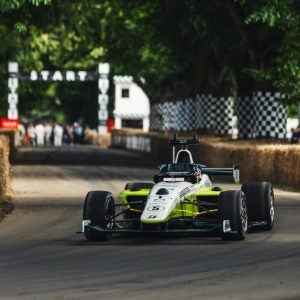
Skill shortage is a hugely discussed area within the industry. Have you seen this project assist this issue?
MF: Interesting question. The IAC has actually functioned as a fantastic talent pipeline for various OEMs. Students working on the most advanced autonomous cars in the world gain immersive, hands-on experience. Many of our partners are eager to connect with this talent pool. As a result, many students end up working for companies like Tesla, SpaceX, and other aeronautical applications.
Part of our mission is to prepare these students with the right knowledge and networking opportunities to succeed after graduation.


